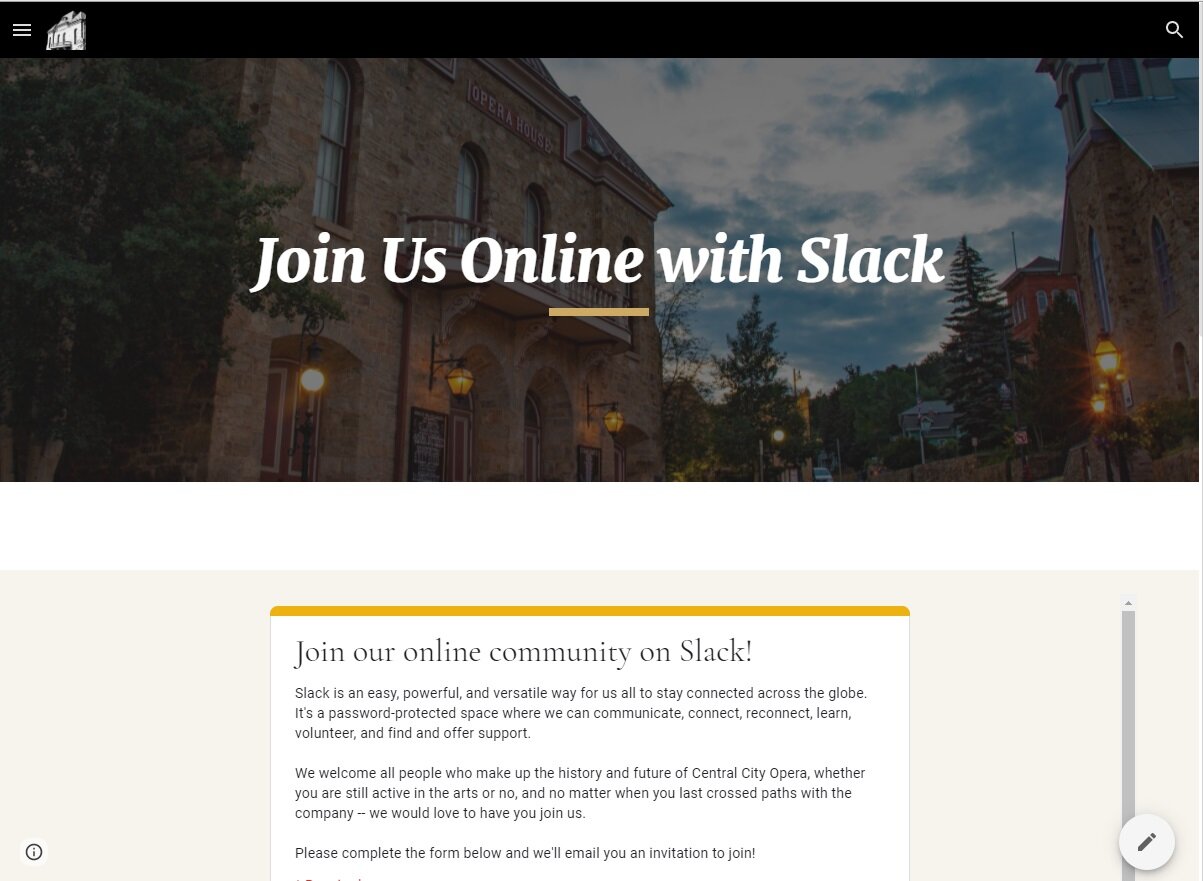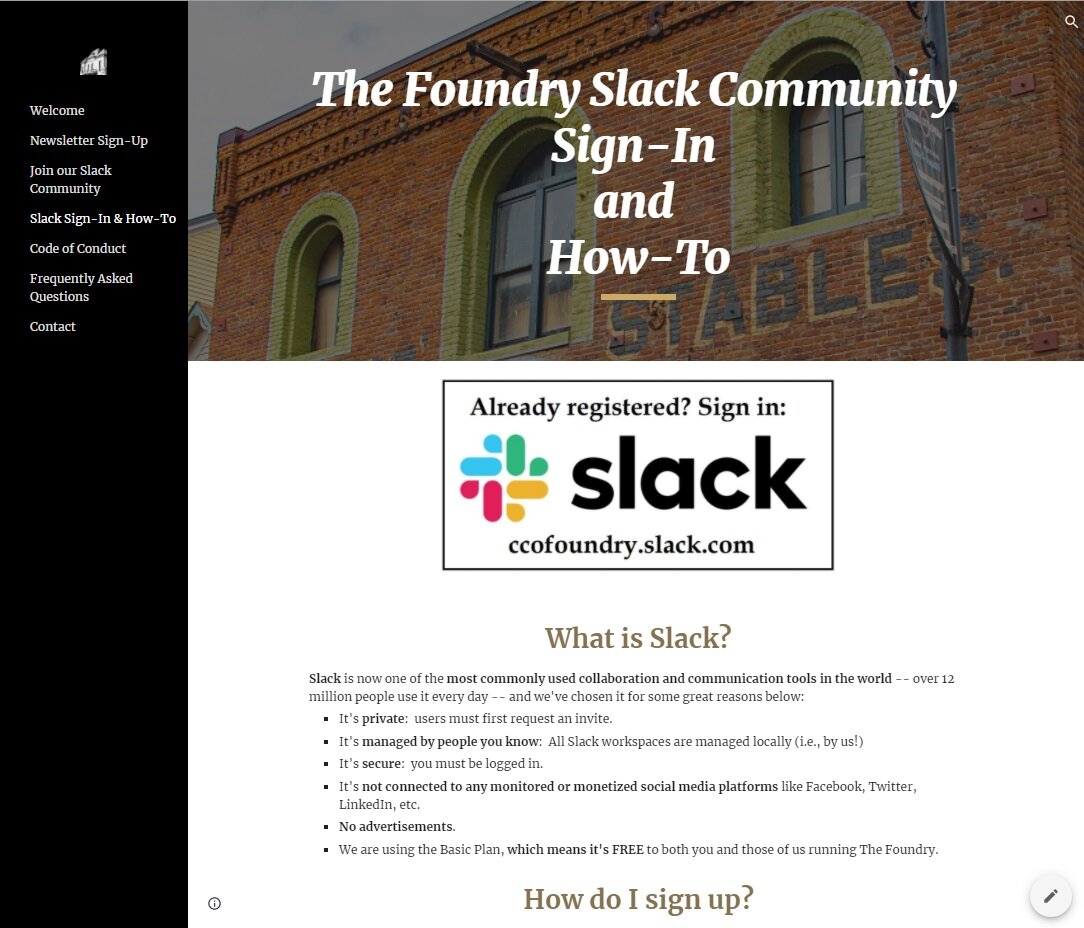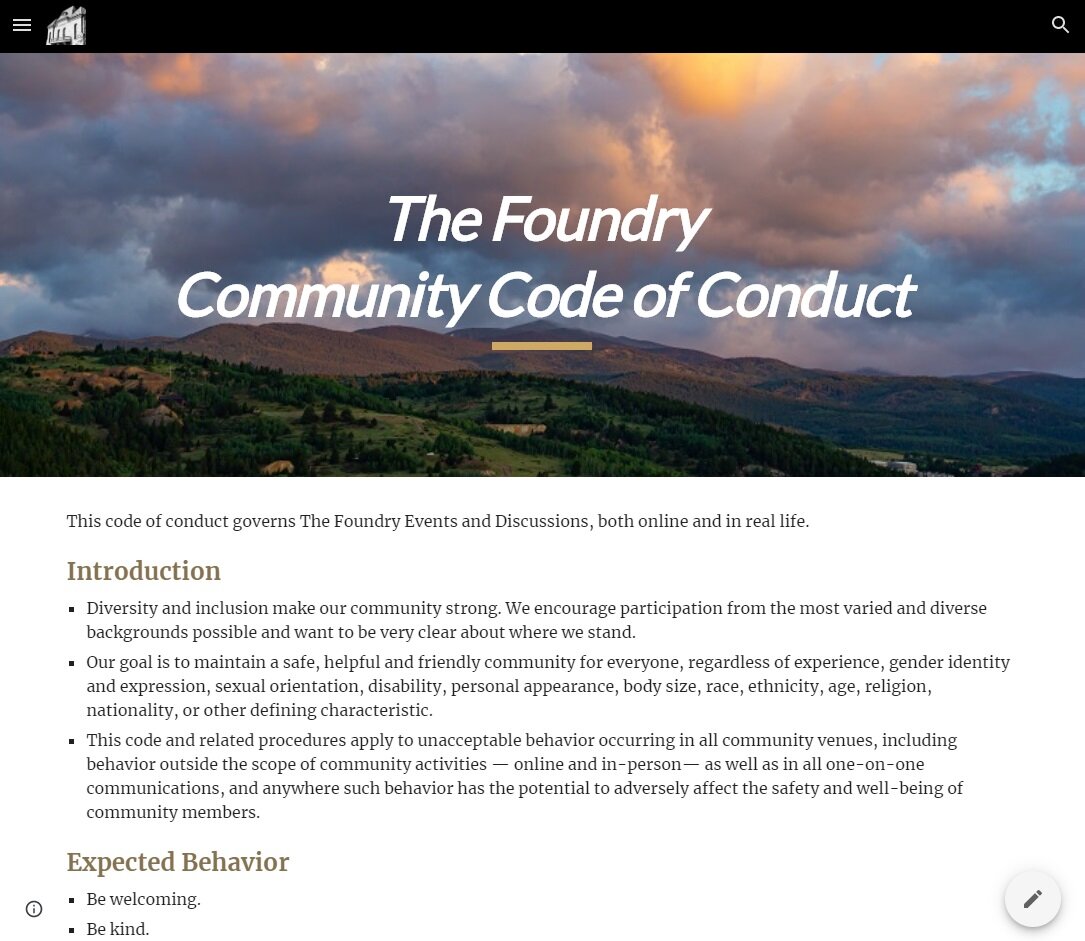THE FOUNDRY PROJECT —
A CASE STUDY
Institutional Memory, Digital Archiving, and Building a Unique Community Development Solution from Scratch
JUMP TO:
The historic Opera House in Central City, Colorado. Photo: Supernal Geography
PROJECT OVERVIEW
Sector : Nonprofit, Arts, Community Organizing
Subject: Central City Opera, an 88-year-old nonprofit performing arts organization, the fifth-oldest opera company in the United States.
Challenges & Possible Business Outcomes:
1) CREATING NEW MEANS OF CONNECTION:
Central City Opera has a wealth of passionate supporters by way of decades of former artists, employees, interns, and volunteers: these individuals usually cease to have any direct connection to the company after the end of a given performance season. Especially in the current era, any U.S. arts nonprofit stands to benefit enormously from the energy of its most enthusiastic supporters. But standard industry practice and culture do not currently provide an appropriate means of bridging this gap. The goal is to create an entirely new online space in order to do so.
2) PRESERVING INSTITUTIONAL MEMORY:
With about 90 years of history, there are many thousands of artifacts of many kinds (and dozens of aging physical properties owned by the company), some of which have been widely geographically dispersed. While a local university has begun a major archival project of their own, there are still entire classes of physical objects and properties of which there is little to no digital or photographic documentation, making them vulnerable to destruction and permanent loss. Since the company does not generally have the financial or labor wherewithal to preserve all this itself, this presents an opportunity to create a database linking physical artifacts and structures to a comprehensive performance history into a unified, media-rich, and easily accessible archive on the web.
Solution : A website, representing both a first-of-its-kind community development solution for an opera company AND a sustained, comprehensive archival effort.
Timeline:
Ideation (2018)
User Research, Project Development (2019)
Identity Pivot, MVP Depoloyment (2020)
Full Rollout (Jan. 2021)
Live Events (June 2021)
WORK
My Roles: Ideation, Product Management, Project Management, UX Research, Branding, Website Design & Administration
How I Got Involved: A professional opera singer for about 15 years myself, I’m a former apprentice trainee as well as guest artist over multiple seasons at Central City Opera. Over the course of about a year, conversations with my colleague Emily Pulley (also affiliated with CCO for many years) led us to believe there were major opportunities for support, preservation, and growth which were being missed. During the 2019 summer season, Pulley and I proposed a solution to the company, and were given the green light to proceed.
Collaborators:
- Emily Pulley, Co-Founder: Operatic Soprano, Stage Director, Educator, and Central City Opera Alumni Association Co-Founder & New York Director.
- Kate Dignan, Technical Consultant: UX Designer / Product Manager / Front End Developer.
Tools: Invision, Figma, Photoshop, Lightroom, Squarespace, Google Sites, Slack
Status (Oct. 2020): Identity Pivot complete, Website LAUNCHED, soft rollout underway.
Related/Read More:
UNDERSTANDING THE PROBLEM(S)
What needs to be solved?
Problem #1: Former artists, staffers, interns, and volunteers often leave Central City Opera with strongly positive feelings about the company, its mission, and their time there. They may represent a huge, untapped well of potential support for the company in the form of passion, nostalgia, and affection.
Problem #2: However, there’s currently no meaningful way for them to reconnect with the company or its community after their contracts/seasons end. The nonprofit arts business model in the U.S. neither provides a solution nor incentivizes the company to find one.
The Bottom Line — Means and Incentive:
No matter how positively “alumni” (in the broadest sense) of any opera company may feel about said company, there’s currently no means for these alumni to connect/reconnect with the company, and there’s usually no real incentive for the company to reach out to these “alumni” for support, either.
Related/Read More:
AFFINITY MAPPING
How does an opera company have “Alumni”?!
For our purposes, “Alumni” describes anyone and everyone who has ever had a professional or volunteer relationship with the company.
Related/Read More:
UX RESEARCH I: SURVEY DESIGN, USERFLOWS, and F.A.Q.
Survey Design
In the Fall of 2019, we published a survey to test our hypothesis that there was an unmet need for connection between Central City Opera and its former artists, employees, interns, and volunteers. We got over 80 responses from members of the U.S. opera industry, providing a treasure trove of quantitative and qualitative data.
Survey Userflows
To help orient people arriving at centralcityalumni.org to either take the survey (or learn more about it), I needed to map out some user flows:
Frequently Asked Questions
As a number responses to the survey continued to roll in, in became clear that we hadn’t yet done a good enough job explaining what we were about in both the survey and our ideas for the Association. In response, we created this F.A.Q.
UX RESEARCH II: QUANTITATIVE AND QUALITATIVE DATA
After approximately six weeks online in the Fall of 2019, we decided to close the survey having received a total of 82 responses.
What worked?
Building the survey on Google Forms was a great choice: simple, free, and utterly reliable.
What were the challenges?
While it was generally easy to get communication leaders of various groups of “alumni” interested in our project — including key local and national union reps who had expressed interest, and who held e-mail distribution lists with dozens, if not hundreds, of my very target recipients — it was hard to convince them to make it a priority. Ultimately, the 82 we received probably represent only those we reached via Facebook. I began some good conversations this time around, though, and I hope to be able to capitalize on them for future efforts (like the next survey, which we hope to launch in spring 2020 to dig deeper into the responses we received.
WHO ANSWERED THE SURVEY?
Question 2: While technically we had a diverse set of professional disciplines represented among the respondents, the overwhelming number of survey respondents (approx. 80%) were singers.
HOW ENGAGED ARE THEY IN THE OPERA INDUSTRY?
Questions 5 and 6: We wanted to get a sense not only of how many had a relatively recent affiliation with the company, but also how many were effectively still “in” the business in one way or another.
Just under half were involved with the company within the last 3 years; 90% were active with at least one opera company somewhere within the last 3 years, which tells me that the remaining 10% would likely self-identify as no longer being active in “the biz.”
HOW DO THEY FEEL?
Questions 7, 8, and 9: While not adhering strictly to a Net Promoter Score (NPS) methodology score here, it’s important to note that respondents generally feel extremely positive about the company and its impact on their lives.
VALIDATION OF OUR HYPOTHESIS
Question 10 asked whether connecting or reconnecting with the Central City Opera community is important to the respondents: 78% said yes.
Question 11 asked whether they’d be willing to volunteer or advocate for the company, whether in person or online: 62% said yes.
CONCLUSION
Based on these numbers, we believe our initial hypothesis has been validated:
1) there is indeed an unmet need for connection between Central City Opera and its “Alumni,” and
2) a majority of them want to help if they can.
UX RESEARCH III: BUILDING PERSONAS
Using the above survey responses, I generated four personas, each representing four rough groups of people the Alumni Association could serve. The General Feedback, while lightly edited, is still taken directly from the Survey’s qualitative data.
Related/Read More:
PRODUCT VISIONS & SOLUTIONS
Pre-COVID Timeline
The 2020 Central City Opera Festival, like so many other organizations, was cancelled/postponed by a year. Since the original target launch date of an MVP would have been tied directly opening night of the season, this has pushed back our target release by upwards of a year. This has also given me time to dive deeper into the data and reassess, post-COVID, how best the Alumni Association can serve its membership.
Project Timeline Version 2 is forthcoming; currently my plan is to deploy an MVP in advance of opening night of the 2021 season.
WIREFRAMES — centralcityalumni.org
Made with Invision.





MOCKUPS — centralcityalumni.org
Made with Figma.
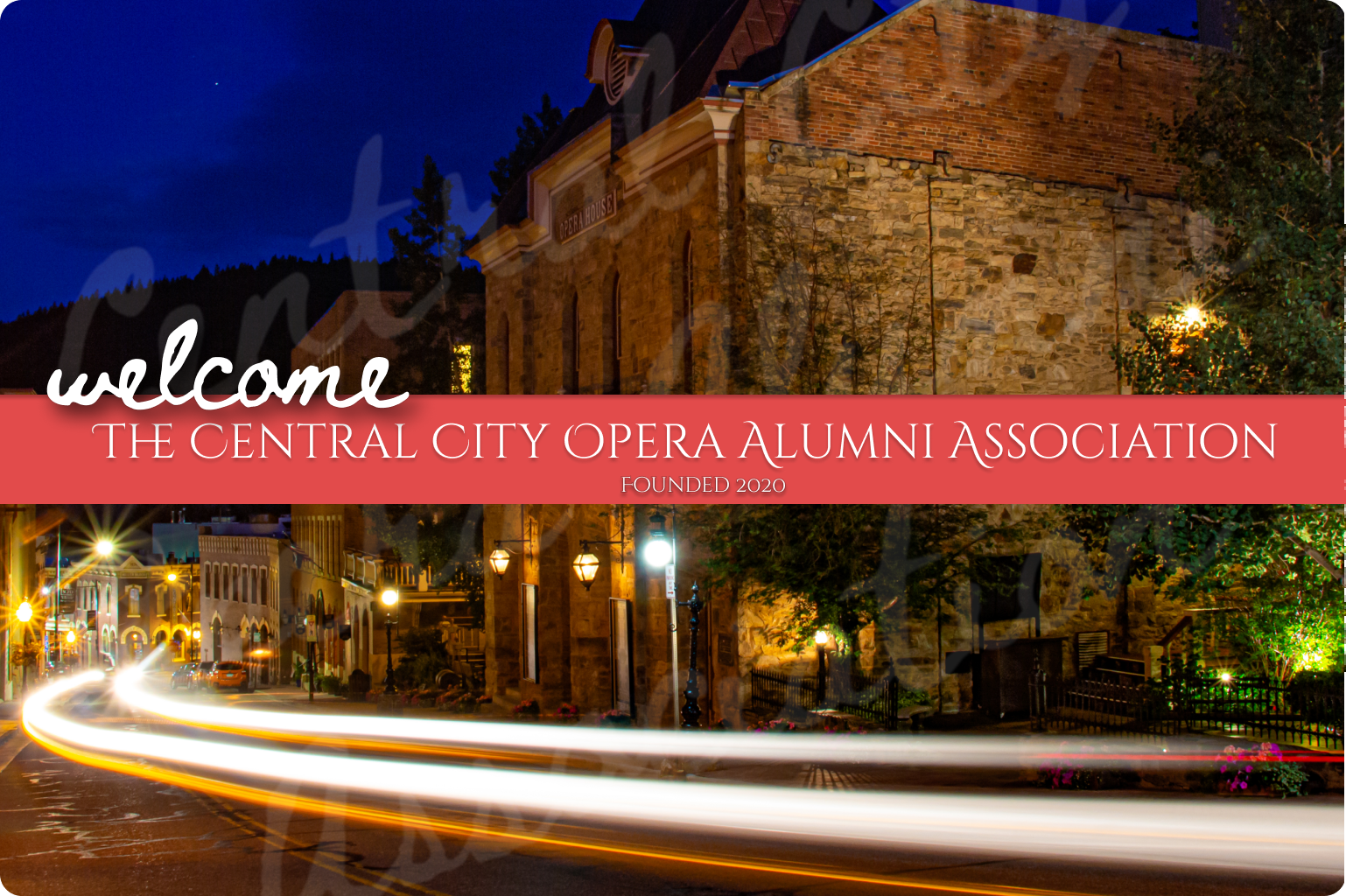

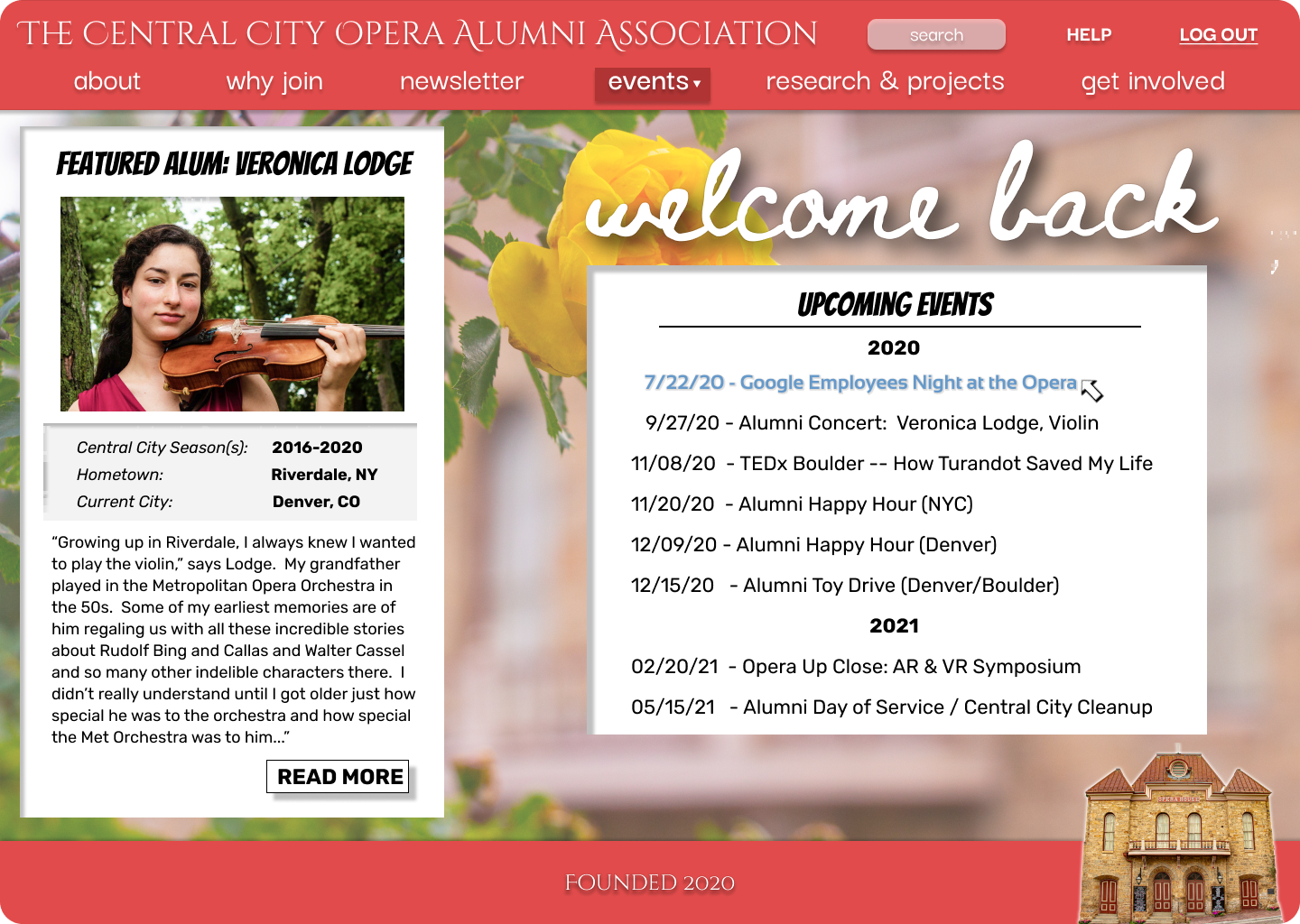

Made with Figma.
IDENTITY PIVOT & LAUNCH
In 2019, when we first started developing the idea which eventually became The Foundry, we were calling it "The Central City Opera Alumni Association."
For our purposes, "alumni" meant anyone who has ever had any professional or volunteer association with Central City Opera in any capacity. But we found that that name wasn't as clear or easily understood as we wanted it to be.
We also dropped the word "association" because we wanted it to be clear that no one has to pay to take part in The Foundry.
A "foundry" is defined as "a workshop or factory for casting metal."
For us, "The Foundry" both generally references Central City's historic roots as a mining town, as well as its major efforts at historic preservation. For example, The Foundry Rehearsal Center, located just up Eureka Street from the Opera House, was once a working industrial facility. Facing a chronic shortage of available rehearsal spaces in Central City, in 1994 the company converted it into a beautiful set of rehearsal and production facilities, with one large and two medium-sized rehearsal halls, as well as practice/coaching rooms, and offices/studios for other production departments, as well.
Like that transformation, we want to be able to tie together many elements of Central City Opera's past, present, and future.
After two years of development, The Foundry will finally launch on April 10, 2021!
Website version 1.0 (October 2020) — ccofoundry.org


